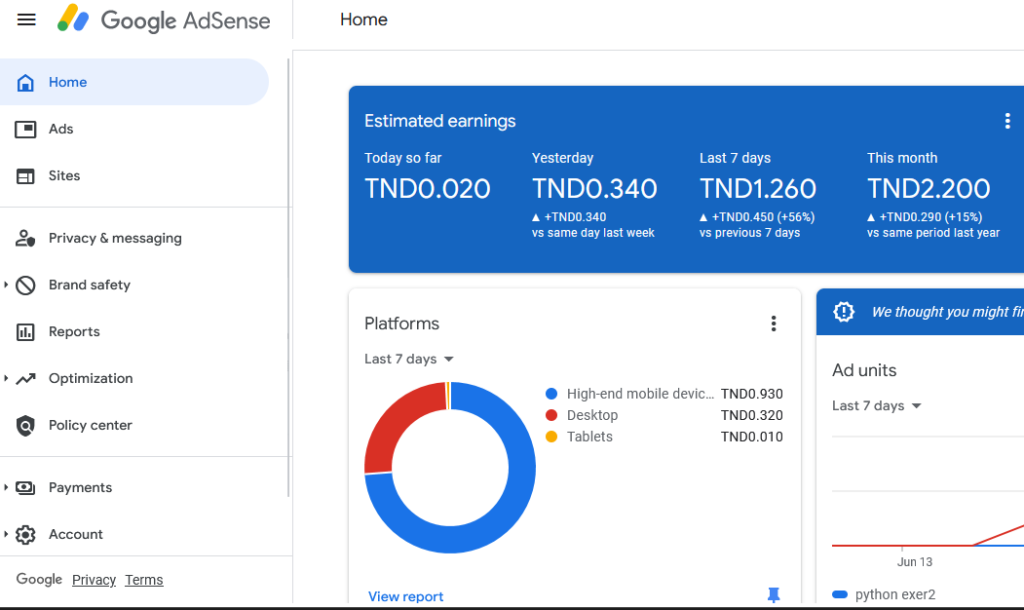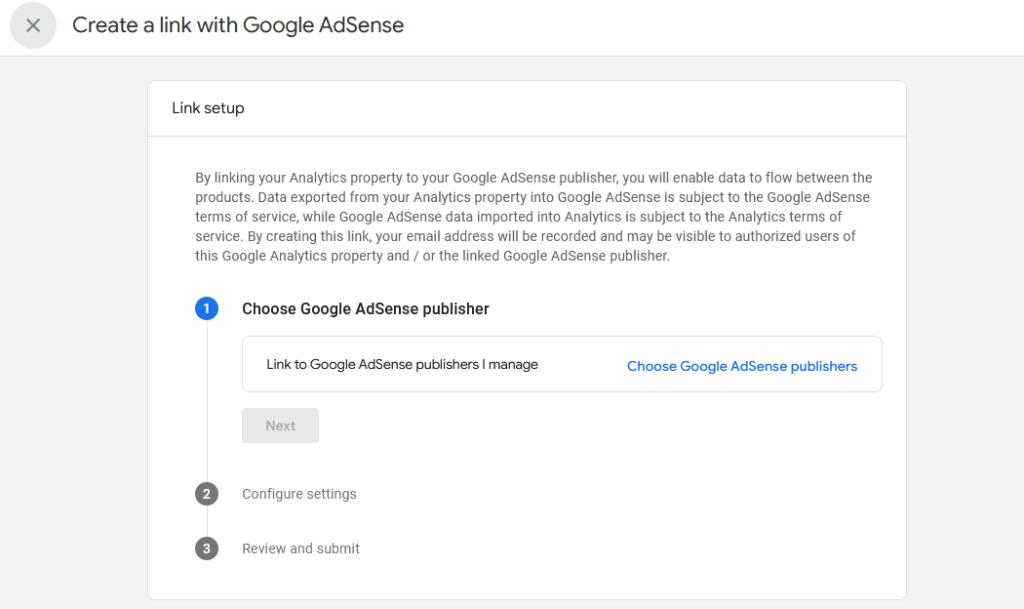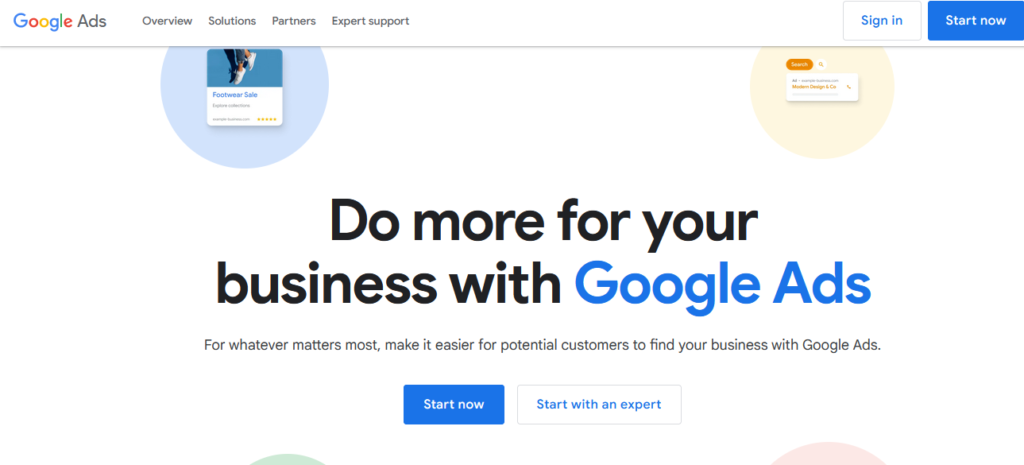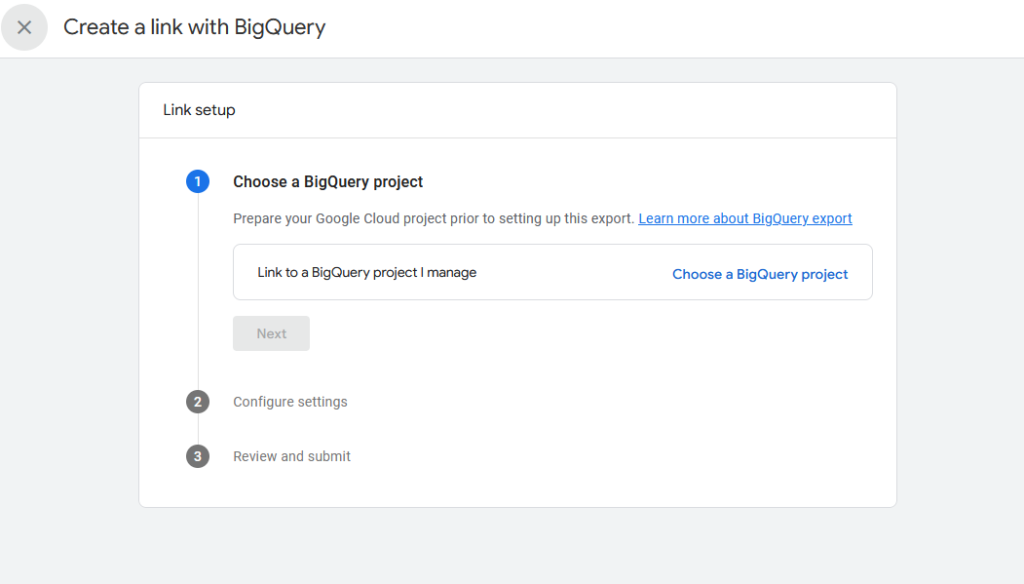
Table of Contents
Introduction
Welcome to the ultimate guide for integrating your website with all Google products! This detailed tutorial is packed with helpful visuals and easy-to-follow instructions to assist you in connecting your site to a variety of Google services.
Whether you want to boost your website’s performance or generate revenue from your content, this guide has got you covered. We will be discussing:
- Google AdSense connections
- Google Ads connections
- Ad Manager connections
- BigQuery connections
- Display & Video 360 connections
- Floodlight connections
- Merchant Center connections
- Google Play connections
- Search Ads 360 connections
- Search Console connections
Prepare to unleash the full potential of your website with this top-notch guide. Let’s get started and begin the integration process!
Step-by-Step Instructions to Link Your Website with Google Products

Step 1: Open Google Analytics
Here’s what you should do:
I believe the first step is to open Google Analytics.
Once you’re there, click on the Admin button located in the lower-left corner of the page, as shown in the image.
This will bring you to a comprehensive dashboard where I think you’ll find everything you need.
It’s not just about AdSense; you’ll also discover a range of other Google products waiting to be explored.
We’ll take each of these products step by step, guiding you through the process to ensure you understand how to connect your website effectively.
Go a little bit further down until you find this section (Product links):

Let’s delve deeper into each of these aspects and discover the best ways to connect them seamlessly with our website.
We will carefully examine each Google product, taking it one step at a time, to grasp the integration process and enhance our website’s performance and functionality.
Link My Website With Google AdSense
What is Google AdSense?

Google AdSense is widely acknowledged as one of the top tools for website monetization. It enables publishers to earn revenue by showcasing programmatic ads on their sites.
This free platform acts as a bridge between website owners and advertisers, facilitating a seamless connection.
| Advantages of Google AdSense | Disadvantages of Google AdSense |
|---|---|
| Free to join: | Single demand partner: |
| There is no cost for publishers to sign up and start monetizing their websites with AdSense. | AdSense operates within Google’s ad network only, limiting access to potentially higher-paying ad partners. |
| Suitable for small publishers (<100k monthly visitors): | Revenue share: |
| AdSense is particularly suitable for websites with smaller audiences, offering a straightforward revenue stream. | Google takes a 20% commission from the total ad revenue generated through AdSense, reducing earnings for publishers. |
| Simple setup process: | Payment threshold: |
| Setting up AdSense requires minimal technical knowledge, making it accessible for publishers of all skill levels. | Publishers must reach a payment threshold of $100 (or €70 for Eurozone countries) before receiving payouts, which can delay payment. |
| Auto Ads option: | Account termination: |
| AdSense’s Auto Ads feature automates ad placement and optimization across different screen sizes, enhancing user experience. | Google reserves the right to terminate AdSense accounts without warning, which can disrupt revenue streams abruptly. |
| Multiple website monetization: | Limited flexibility after account termination: |
| Publishers can manage and monetize multiple websites using a single AdSense account, simplifying ad management. | If an AdSense account is permanently terminated, publishers may lose access not only to AdSense but also to other Google monetization tools. |
| Integration with Blogger and YouTube: | Ad placement issues: |
| AdSense can be used to monetize content on platforms like Blogger.com and YouTube (subject to eligibility requirements). | The Auto Ads feature occasionally misplaces ads or leaves blank spaces on websites, potentially affecting user experience negatively. |
This table offers a comprehensive look at the advantages and obstacles that come with utilizing Google AdSense to monetize websites, empowering publishers to make well-informed choices regarding their advertising tactics.
Google Ads search certification Quizlet
Google Analytics GA4 configuration missing
Google Analytics no data available
Google Cloud sales credential
Google Cloud sales credentials
Google Digital Marketing exam questions and answers PDF
Google Search Ads certification Quizlet
Google Workspace deployment services credential
How to Make Money with Google AdSense in 2024?
In order to earn money through Google AdSense in 2024, there are several key steps that I believe are necessary to optimize ad revenue from my website or platform.
Firstly, I would need to establish a website, blog, YouTube channel, or app that offers valuable content to attract a specific audience. It’s important for me to choose a niche that interests me and aligns with advertiser interests to enhance revenue potential.
I strongly believe that consistently creating high-quality content is crucial in engaging my audience and encouraging repeat visits.
It is also essential to adhere to Google AdSense policies in order to maintain a good standing. Therefore, I would apply for an AdSense account and provide accurate information about my platform.
Another important aspect is optimizing the layout of my website to seamlessly integrate ads without compromising the user experience.
By implementing responsive design, I can ensure that my site functions well on all devices, which will improve ad visibility and user interaction.
Focusing on SEO to increase organic traffic and attract more visitors is another vital step. I would promote my content through various channels such as social media and email marketing to expand my audience and attract potential advertisers.
Regularly monitoring analytics to track ad performance and optimize ad placements is crucial. Additionally, I would experiment with different ad formats offered by AdSense to find the most effective ones for my site.
Understanding metrics like RPM (Revenue Per Mille) and CTR (Click-Through Rate) will help me gauge ad performance and adjust my strategies accordingly.
Lastly, it is important to stay compliant with privacy regulations when collecting user data for advertising purposes.
By following these steps, I am confident that I can effectively monetize my content through Google AdSense and maximize my revenue potential in 2024.
Link My Website With Google AdSense

Click on Google AdSense links button.

Then click on the Link button.
Learn more
Once that’s done, proceed to finalize the remaining configurations.

Link Google Ads To My Website
What is Google Ads?
Google Ads is an online advertising program created by Google specifically for businesses. Its purpose is to help businesses reach their target audience by creating ads that cater to people who are interested in their products and services.
This platform allows you to effectively promote your business, sell your products, increase brand awareness, and drive traffic to your website.

With Google Ads, you have the convenience of managing your advertising campaigns online. This means that you can easily create and modify ads, adjust settings, and control your budget whenever it suits you.
The best part is that there is no minimum spending requirement, giving you the freedom to allocate your budget as you see fit.
You also have the power to choose where your ads will appear, ensuring that they reach the right audience.
Additionally, tracking the effectiveness of your campaigns is a breeze, allowing you to make data-driven decisions to optimize your results.
Link Google Ads To My Website
Click on the “Google Ads links” button again and continue with the steps you are already familiar with. This includes going through the settings, making any necessary adjustments, and ensuring that everything is in line with your advertising objectives.

To connect your Analytics property with your Google Ads account, start by choosing the Google Ads accounts you want to link in your Analytics settings.
This first step will enable a smooth flow of data between the two platforms, improving your ability to analyze campaign performance thoroughly.
Then, set up the configurations to determine how data will be shared. This includes specifying which metrics and dimensions should be transferred from Google Ads to Analytics, and vice versa.
You can customize these settings to match your specific reporting and analysis requirements.

Once you have configured the settings, double-check all your choices and adjustments for accuracy. When you are happy with everything, save your configurations to complete the connection between your Analytics property and Google Ads account.
By establishing this link, you facilitate efficient data exchange that will help you measure campaign effectiveness, refine strategies, and gain deeper insights into user behavior on both platforms.
This integration supports better decision-making and streamlines campaign management processes.
Link Ad Manager To My Website
What is Ad Manager ?
Google Ad Manager is a powerful platform designed for large publishers who handle a significant amount of direct sales. It provides detailed controls and supports multiple ad exchanges and networks, including AdSense, Ad Exchange, third-party networks, and exchanges.
If you manage different types of inventory across websites, mobile apps, videos, or games and need a centralized solution for monetization, Ad Manager is the perfect choice.
It is especially useful for managing substantial ad revenue from direct deals with buyers and integrating third-party networks to compete for ad inventory. The platform also offers advanced reporting capabilities, giving you detailed insights into ad performance and revenue.
Depending on your specific advertising needs, you may also consider AdSense or AdMob as alternative options. To determine the best fit for your business requirements, you can explore detailed comparisons among Ad Manager, AdSense, and AdMob.
Certain exclusive features are available for Ad Manager 360 accounts, such as Audience Solutions, data transfer reporting, open bidding, publisher provided identifiers, special ad units, and access to Teams.
If you’re interested in these advanced features, you can inquire about upgrading to an Ad Manager 360 account through your designated account manager.
Most publishers use a single Ad Manager network to manage their advertising operations. Within this network, ad inventory is defined through designated ad units, which are specific locations on webpages or apps for displaying ads.
Ad Manager generates a unique tag (snippet of code) for each ad unit, which is then inserted into the webpage or app.
When a user visits the webpage or app, the ad tag sends a request to Ad Manager to serve an ad. Publishers create orders and line items within Ad Manager to represent their agreements with advertisers or buyers. Campaigns targeting these ad units can deliver ads based on predefined criteria.
Link Ad Manager To My Website

After connecting Google Ads, you’ll see that it automatically links up without needing any extra steps or settings from you.
This smooth integration guarantees a seamless connection between your platforms, making data sharing more efficient and improving the management of your ad campaigns.
Link BigQuery to your website
What is BigQuery?
BigQuery is an impressive enterprise data warehouse that is fully managed and designed to assist organizations in effectively managing and analyzing their data.
It comes with built-in features such as machine learning, geospatial analysis, and business intelligence, which can provide valuable insights.
BigQuery’s serverless design allows you to run SQL queries to address crucial organizational questions without the hassle of managing infrastructure.
It also supports federated queries, enabling you to access and analyze data from external sources directly within BigQuery. The streaming ingestion feature ensures that your data remains continuously updated in real-time.
One of the most remarkable aspects of BigQuery is its scalable and distributed analysis engine. It can process terabytes of data in seconds and even petabytes in just a few minutes, making it ideal for handling large datasets.
BigQuery’s architecture consists of a storage layer for data ingestion, storage, and optimization, and a compute layer for analytical capabilities.
These layers operate independently but are seamlessly integrated through Google’s extensive petabyte-scale network, ensuring efficient data processing and smooth communication.
Link BigQuery to your website
Integrating BigQuery with your website allows you to enhance data analysis and management directly from your online platform.
By connecting BigQuery, you can take advantage of its robust features like machine learning, geospatial analysis, and real-time data processing to gain deeper insights and improve decision-making.

To link BigQuery to your website, start by setting up a data ingestion pipeline from your website to BigQuery. This can involve using tools such as Google Analytics or custom scripts to send data to BigQuery tables.
Once the data is flowing into BigQuery, you can then use SQL queries or integrate BigQuery APIs to analyze and visualize the data.
Additionally, consider implementing streaming ingestion if you need real-time updates from your website to BigQuery. This ensures that any changes in data on your website are immediately reflected in BigQuery for up-to-date analysis.
By linking BigQuery to your website, you empower your organization with powerful analytical capabilities and real-time insights, enabling you to understand user behavior, optimize performance, and effectively drive business growth.
Conclusion
In summary, this guide has provided you with the necessary knowledge and tools to smoothly incorporate your website with various essential Google products.
Whether you’re looking to boost ad revenue with AdSense, enhance marketing strategies through Ads and Ad Manager, or explore advanced analytics with BigQuery, you now have the expertise to elevate your website.
By utilizing Display & Video 360, Floodlight, Merchant Center, Google Play, Search Ads 360, and Search Console, you’ve adopted a comprehensive approach to improving performance, visibility, and monetization opportunities.
Each integration brings unique advantages that contribute to a well-rounded online presence.
As you integrate these tools, remember to track performance metrics, adapt strategies as required, and keep exploring new features within Google’s expanding range of tools.
Armed with this information, you’re well-equipped to navigate the digital landscape effectively and achieve success for your website.
Begin the integration process today and unlock the full potential of your online presence with Google’s robust suite of products and services.




0 Comments